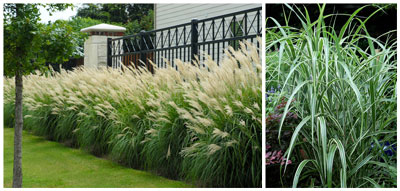Introduction to Decorative Grasses
As a Texas resident with a passion for gardening, I have always found joy in incorporating decorative grasses into my landscape. These stunning plants not only enhance the beauty of gardens but also provide a variety of practical benefits. In this guide, we will explore the best decorative grasses for Texas gardens, their features, and how they can transform your outdoor space.
Why Choose Decorative Grasses?
Decorative grasses offer a unique aesthetic that can add texture, movement, and color to your garden. Here are some reasons why they are a great choice for Texas landscapes:
- Drought Tolerance: Many grasses are drought-resistant, making them ideal for Texas’s hot climate.
- Low Maintenance: Once established, most decorative grasses require minimal care.
- Wildlife Friendly: They attract various birds and beneficial insects.
- Versatile Design: Grasses can be used in borders, focal points, or as ground cover.
Best Decorative Grasses for Texas
Here are some of the top decorative grasses that thrive in Texas:
1. Gulf Coast Muhly Grass (Muhlenbergia capillaris)
This native grass is well-suited for the Texas climate, known for its striking pink-purple flower plumes that bloom in the fall.
Pros and Cons
| Pros | Cons |
|---|---|
| Highly drought tolerant | Can be invasive without management |
| Beautiful fall blooms | Requires well-drained soil |
2. Blue Grama Grass (Bouteloua gracilis)
This grass has a distinctive appearance with its blue-green blades and unique seed heads that resemble eyelashes.
Pros and Cons
| Pros | Cons |
|---|---|
| Great for erosion control | Needs full sun |
| Attracts pollinators | May require more water in extreme heat |
3. Switchgrass (Panicum virgatum)
This native perennial grass is known for its height and airy flower heads, adding elegance to gardens.
Pros and Cons
| Pros | Cons |
|---|---|
| Provides excellent cover for wildlife | Can spread aggressively in rich soils |
| Beautiful autumn colors | May require cutting back each spring |
Design Ideas for Using Decorative Grasses
Decorative grasses can be integrated into your landscape in various creative ways. Here are some design ideas:
1. Borders and Edges
Planting grasses along the edges of flower beds creates a soft transition and can help define spaces within your garden.
2. Focal Points
A tall grass like switchgrass can serve as a stunning focal point or backdrop for flowering plants.
3. Mass Planting
For a dramatic effect, consider planting large swathes of one type of grass to create a natural-looking meadow.
Care and Maintenance of Decorative Grasses
While decorative grasses are generally low-maintenance, they still require some care to thrive:
1. Watering
Water your grasses deeply but infrequently, allowing the soil to dry out between waterings, especially during dry spells.
2. Fertilization
Most grasses do not require heavy fertilization. A light application of a balanced fertilizer in the spring can promote healthy growth.
3. Pruning
Cut back dead foliage in early spring before new growth starts. This helps promote fuller and healthier plants.

Common Pests and Diseases
Despite their resilience, decorative grasses can fall prey to certain pests and diseases. Here are some common issues:
1. Pests
Grasses can attract aphids, spider mites, and grasshoppers. Regular monitoring can help catch infestations early.
2. Diseases
Look out for fungal diseases such as rust and leaf spot. Proper air circulation and avoiding overhead watering can help prevent these issues.
Frequently Asked Questions (FAQs)

1. Which decorative grasses are best for shade in Texas?
While most decorative grasses thrive in full sun, some varieties like Carex and Northern Sea Oats can tolerate partial shade.
2. How often should I water decorative grasses?
Water deeply but infrequently. Once established, many grasses are drought-tolerant, needing water primarily during extreme dry periods.

3. Can I use decorative grasses for erosion control?
Absolutely! Grasses like Blue Grama and Switchgrass are excellent for preventing soil erosion due to their extensive root systems.
4. When is the best time to plant decorative grasses in Texas?
The best time to plant is in the spring after the last frost, allowing the plants to establish before the heat of summer.
